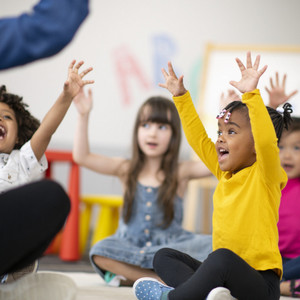Laughter is the Best Medicine for Students
A while back, I visited a friend’s son in the hospital, and I was reminded of the movie “Patch Adams.” Dr. Adams was a physician who helped children momentarily forget about their troubles and focus on smiling. In a hospital where doctors were only concerned about a patient’s health, Dr. Adams was able to recognize that his struggling pediatric patients needed fun and laughter as part of the healing process.
Laughter stimulates creativity, reduces stress, and motivates students to perform. These are only some of the benefits that make humor a great tool for the classroom. Besides getting everyone’s attention, humor goes a long way towards fostering a healthy learning environment. For one thing, it’s an icebreaker. It can help open the floor up to a free-ranging, topic-oriented discussion in which students relax enough to seamlessly involve themselves in the lesson. How can teachers use laughter in the classroom?
Make intentional mistakes: Mistakes can be turned into humor and at the same time test students’ listening ability. You can easily turn any statement into a mistake by changing one key word, then see how students respond.
Laugh at yourself: When you do something silly or wrong, mention it and laugh at it.
Ask crazy questions: An easy way to get students to laugh is to ask them very strange questions. Add one funny question to every test, every quiz, and every exercise. This ensures smiles and helps to break the tension.
Exaggerate – One way to exaggerate when teaching is with numbers. For example, students can learn to distinguish 15 from 50 if you emphasize the particular rhythm of 15 by writing it as “fifteeeeeeeeeeeen” on the blackboard. Students laugh at this, but they also remember and learn to give a little extra emphasis to the lesson.
Quotable quotes bulletin board in the classroom: Look for humor quotes and post them and encourage your students to do the same.
Cartoon file: Have an area where you can display one or two cartoons a day on a rotating basis, with students involving themselves.
Reserve a weekday: Ask students to bring in jokes to share, either to start the day on a selected weekday or at the end of the day.
Funny Hat Day: Have a funny hat day or mismatched socks day or some other funny dress-up time for students.
Get thinking: Build creative thinking by showing cartoons and pictures to which students can add captions.
Reading time: Ask students to bring in books they think are funny. Ask them to talk about fun parts, and to use examples from book.
Remember that it’s not all fun and games – humor can often misfire. Some things that you consider funny, others may not. To be effective in the classroom, humor must be constructive. Take care to place jokes and anecdotes within the context of the material being presented, and in a manner that supports the lesson being taught. Remember, you want to teach well, not be a stand-up comic. For maximum effect, humor should be employed deliberately and be very well thought out.
Here’s some important points to keep in mind:
1. Avoid hurtful humor.
2. Let common sense guide your subject selection, tone and intent.
3. Know your student/teacher dynamics and judge the joke climate carefully.
4. Make humor relevant by delivering on time, content-oriented material.
5. Don’t be afraid to “Act Out” concepts and content.
6. When appropriate, use your own funny life stories if they don’t involve anyone that the students could identify. It is critical to not embarrass others.
Some food for thought:
- What strategies can you use to bring more fun and humor into the classroom?
- When you use laughter in the classroom, does it elevate your lesson? Why or why not?
How can teachers use laughter in the classroom? Let’s add some more enjoyment to teaching! Check out the online PD course, Bulletin Boards: Ideas for Every Classroom for some fun ideas!
September 2020 Editor’s Note: This post was originally published in May 2015 and has been updated for accuracy and comprehensiveness.
 About the Author
About the Author
Ellen Paxton is a respected expert in education and best known as the Chief Learning Officer of Professional Learning Board. As a two-time National Board Certified Teacher, Ellen has successfully published and customized online professional development courses and Learning Management Systems for 20 years to help teachers meet their state continuing education renewal credit requirements. Through ProfessionalLearningBoard.com, RenewaTeachingLicense.com, and ConnectedPD.com, Ellen has established solutions and maintained partnerships with several accredited universities, higher education institutions, teachers’ unions and state Departments of Education while setting strategic direction that makes a difference and overseeing implementation of popular online PD.

Comments are closed.